Urban Decay in Detroit
Wednesday, 6th June 2012 by Ian Brown
For the first half of the twentieth century, the city of Detroit enjoyed decades of prosperity and spectacular development driven by a booming motor industry. But since the 1950s, a succession of challenges - including economic recessions, competition from overseas car manufacturers, and increased suburban development - saw the fortunes of the downtown core take a turn for the worse. As a result, a large number of notable buildings have been left empty and abandoned. A prime example of this is Michigan Central Station.
The station and adjoining 18-storey tower were built in 1913 at a cost of $15million. The tower was never fully occupied - plans for a hotel fell through and the Michigan Central Railroad company only needed part of it for office space.
Passenger rail traffic declined rapidly after World War II and by the mid-1960s the station was mostly closed down. A brief revitalisation by national rail carrier Amtrak saw the building reopened in the 1970s, but it closed for good in 1988.
Other than being used occasionally for TV and movie shoots, the grand structure is only visited by those looking to break windows and create graffiti. It faces an uncertain future, with the city hoping to tear it down, but residents still hopeful it can be restored (despite the significant investment that would be required to complete a restoration project on this scale).
Across the street is the Roosevelt Warehouse (also known as the Detroit Public Schools Depository), which was abandoned after a fire in 1987. At the time, much of the supplies held there were undamaged, but for unknown reasons the reusable materials were never recovered. Today it's another target for vandals - almost all the windows are shattered and there's much graffiti. The dilapidation is so bad that there are even trees growing through part the roof.
On Washington Boulevard, the 38-storey Book Tower was once the tallest skyscraper in Detroit. It took a decade to build and finally opened in 1926. It has been in decline since the mid-1970s, though it wasn't fully vacated until 2009. Several plans to renovate the structure have so far come to nothing.
To the west is the boarded-up 'triangular castle' which was the Grand Army of the Republic Building, built in 1900 to serve veterans from the Civil War, but closed since the 1980s.
Another two abandoned buildings are found a short distance to the north-east. The Metropolitan and Wurlitzer Buildings are 15 and 14 storeys respectively, and opened in the mid-1920s.1
The Metropolitan was mainly occupied by jewellers and watch-makers, but has been vacant since 1977. Toxins remaining from the manufacture of luminous watch faces make redevelopment of this site difficult, but apparently don't deter graffiti artists, who have painted the windows with positive images rather than breaking them.
The Wurlitzer building was home to the famous organ company until some time in the 1960s. As well as offices it had a spectacular musical showroom, piano salons and a 400-seat theatre. After Wurlitzer moved out, a variety of tenants occupied the building until finally leaving it empty in 1982. In recent years it has been rapidly deteriorating, with significant pieces of masonry having fallen off.
A few kilometres north-west of downtown, on Grand Boulevard, the Lee Plaza Hotel is a formerly-splendidly-luxurious Art Deco hotel and apartment building dating to 1929. After a slow decline (which included a spell as an elderly care home), it has been derelict for ten years and now stands surrounded by weeds, with windows removed and open to the elements.
We end with two more abandoned hotels that are just outside the downtown district, in an area that really highlights the devastation wrought on this city. The Park Avenue and Eddystone buildings sit surrounded by desolate vacant lots and streets that look as though they haven't been paved in decades.
After its grandeur faded, the Park Avenue building was used as a homeless shelter for a number of years, but has been vacant since around 2007. At the same time, plans were drawn up to restore the Eddystone into luxury apartments, as advertised on the large banner seen in the first-generation Street View imagery. However a more recently captured image shows us that the banner, and with it any hope of restoration, is now in tatters.
Despite this article's focus on the negative recent history of Detroit, in the past few years the city has started to undergo something of a renaissance, with new investment and several areas being redeveloped. We will look at this topic in a future post.
You can read detailed histories of most of these buildings at Historic Detroit and Forgotten Detroit, and there are good photo series at The Guardian and Environmental Graffiti.
-
The elevated track seen in these images carries the trains which comprise Detroit's 'People Mover' transit system. ↩︎
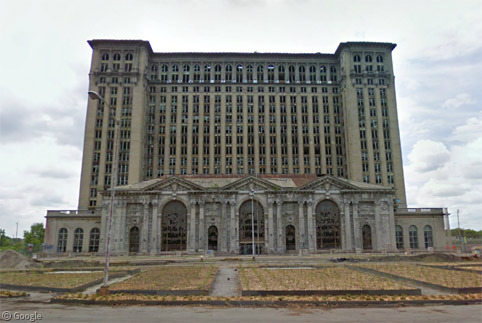
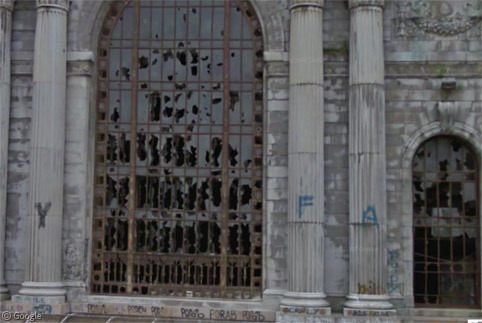
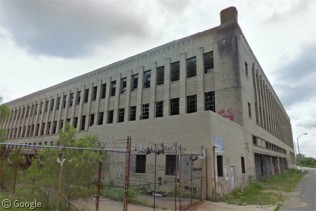
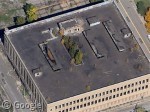
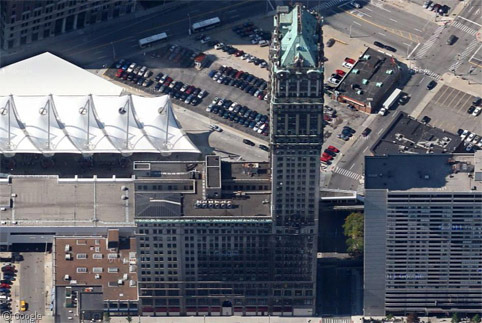
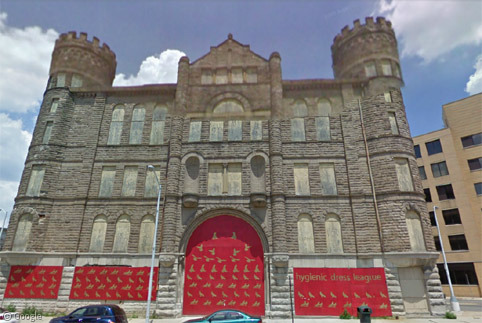
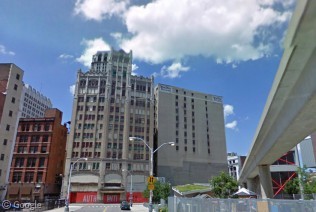
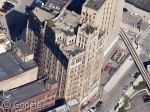
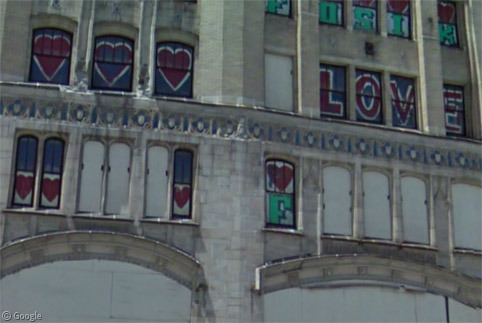
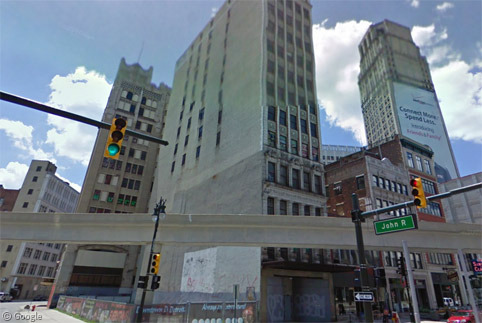
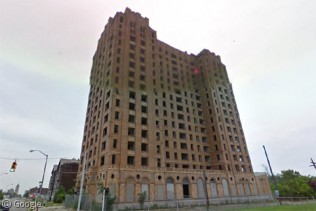
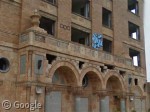
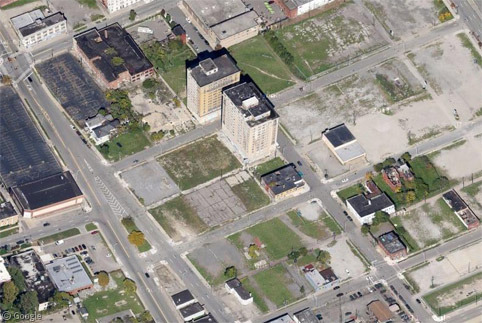
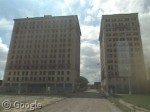
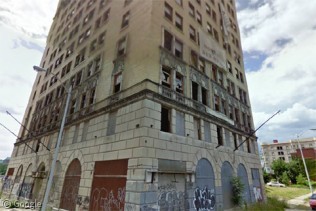
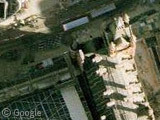
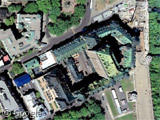
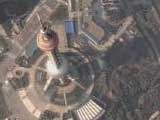
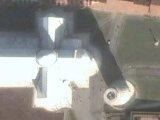
I’ve done some StreetViewing around Detroit, and the weirdest thing is the residential neighborhoods to the north and west of downtown where it looks like 90% of the houses have disappeared, replaced by overgrown meadows.
The decline of Detroit was covered by Julien Temple in a BBC documentary a couple of years ago: http://www.guardian.co.uk/film/2010/mar/10/detroit-motor-city-urban-decline
Ryan> there are also wild animals in some places!
There’s so much empty space there surely it’s not too hard to say, let’s clean this section here for new housing and let nature reclaim this section here, to be turned into a park in the future.
I would love some kind of overlay that let you edit the map almost like Sim City and start to plan out improvements.
Rural michgan View Placemark,,0,-0.42&z=15
Wow, thanks Ryan for describing it, and markus for the link. That really does look like the middle of the countryside, yet a short distance from downtown.
And thanks Dave for the Guardian story.
I understand that this decay is saddening to many people who grew up in or otherwise love Detroit but I just took my first drive through the city and was awestruck by the beautiful weirdness of the place. I have lived in New Orleans and Baltimore. Detroit displays the same issues but on such an enormous scale that I shouldn’t even try to compare it to anywhere. Unlike completely abandoned or ruined modern communities in Japan, Cyprus, Etc., some people are thriving here. There really is a wild art scene here, gardens and meadows in the city. It’s temporarily a wonder of the world. I want to leave my life in DC to do something here. It feels like the only American place I’ve been in years where someone without much money can still do something.